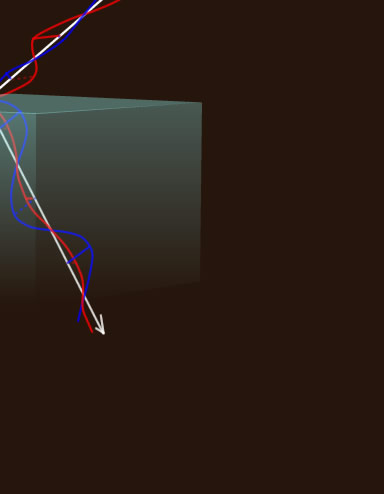Polarization & Fogbows
Istv�n used a polarizing filter. They do odd things to a fogbow and its close cousin the rainbow.
Part of the bow stays bright with enhanced contrast against the sky. Other parts almost disappear. Rotate the filter and the bright and dark areas move around the curve of the bow. Rainbows are strongly polarized, fogbows are less so but still enough to show effects.
Why?
When unpolarized light strikes water, part is reflected and a part enters the liquid. Both rays are partially polarized. Waves with their electric vector parallel to the surface are more strongly reflected. Waves whose electric vector is perpendicular are more strongly refracted. Thus both reflected and refracted rays are polarized to some extent. At one particular angle, the Brewster angle, the rays are completely polarized.
Fogbow and rainbow light undergoes two refractions and an internal reflection and becomes polarized. The polarization directions are radial and tangential to the bow’s curve.
Supernumeraries show extra effects
Supernumeraries shift in distance from the main bow as a polarizer is rotated. In some positions they are nicely enhanced.
When the polarizer's electric vector is tangent to the bow the supernumeraries occupy the position of the dark gaps between the fringes seen when the filter is rotated 90°. The changing position arises because supernumeraries are produced by interference between two rays having the same deflection angle. The superimposition of these two sets of fringes weakens their visibility without a polarizing filter.
For strong supernumeraries use a polarizer.. ..but that will only work on a small fragment as above. |







